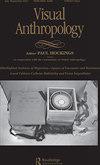从“土壤之子”到“暗风”:印度电影中的自然、环境和气候
IF 0.3
Q3 ANTHROPOLOGY
引用次数: 0
摘要
印度被广泛认为是最大的电影生产国,现在以“宝莱坞”的组合词而闻名全球。印度吸引媒体关注的另一个原因是气候变化。2015年,《纽约时报》发表了一篇专栏文章,其中有一幅漫画,将印度描绘成阻碍巴黎气候变化大会进展的“大象”。随着印度制作的电影数量惊人,以及印度面临的与气候变化相关的灾难稳步增加,评论家们将电影《Kadvi Hawa》(字面意思是《黑风》或《苦风》,2017)视为提出气候变化这一关键问题的“先驱”电影。然而,在过去几十年里,这部电影中提出的问题在其他几部印度电影中得到了充分的处理。这篇文章是对从20世纪40年代到现在展示或处理自然、环境或气候的印度电影的调查。本文章由计算机程序翻译,如有差异,请以英文原文为准。
“Children of the Soil” to “Dark Wind”: Nature, Environment and Climate in Indian Films
India is widely known as the biggest producer of films, now globally known with the portmanteau “Bollywood.” India also grabs the media attention for another reason—climate change. In 2015, The New York Times published an op-ed with a cartoon showing India as the proverbial “elephant” blocking the progress at the Paris Climate Change Conference. With the staggering number of films India produces and the steady increase in climate change-related disasters that India faces, the critics embraced the film Kadvi Hawa (literally, Dark Wind or Bitter Wind, 2017) as the “pioneering” film raising the critical issue of climate change. However, the issues raised in the movie were amply dealt with in several other Indian films in the last several decades. This article is a survey of Indian films that have shown or dealt with nature, environment, or climate starting from the 1940s till the present time.
求助全文
通过发布文献求助,成功后即可免费获取论文全文。
去求助
来源期刊

Visual Anthropology
ANTHROPOLOGY-
CiteScore
1.00
自引率
50.00%
发文量
19
期刊介绍:
Visual Anthropology is a scholarly journal presenting original articles, commentary, discussions, film reviews, and book reviews on anthropological and ethnographic topics. The journal focuses on the study of human behavior through visual means. Experts in the field also examine visual symbolic forms from a cultural-historical framework and provide a cross-cultural study of art and artifacts. Visual Anthropology also promotes the study, use, and production of anthropological and ethnographic films, videos, and photographs for research and teaching.
 求助内容:
求助内容: 应助结果提醒方式:
应助结果提醒方式:


